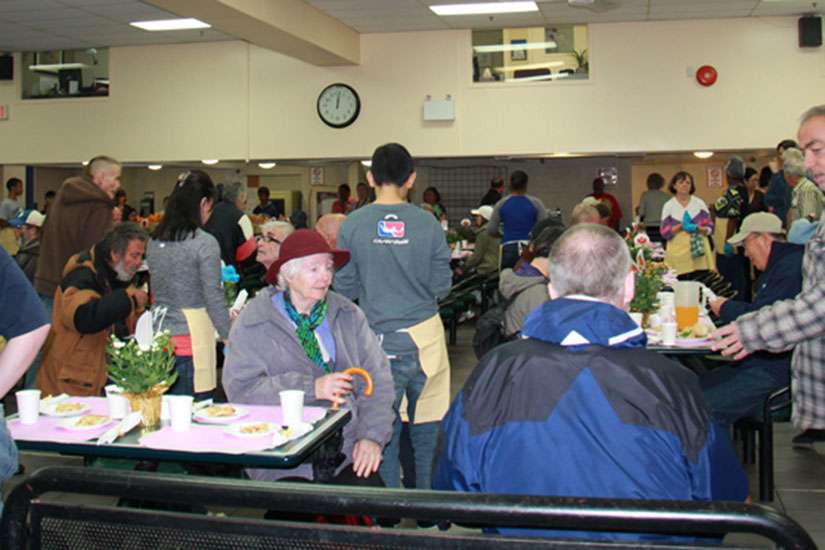The Good Shepherd, run by the St. John of God Brothers, owns or manages 850 housing units that keep some of the most vulnerable people o the streets in Toronto and Hamilton.
Approximately 550 of the units are supportive housing that come with social workers, nursing and psychiatric care.
Alan Whittle, Good Shepherd’s director of community relations and planning, is ready to help both levels of government make good on their housing promises.
“This is is the single biggest commitment that we’ve seen in a very long time, especially around sup- portive housing,” said Whittle after tthe provincial announcement.
The provincial budget in early March promised $178 million over three years for affordable housing, including more than $100 million over the next three years for supportive housing and the services that go with the units. Over the long term, Ontario plans to build 1,500 new supportive housing units.
The direct housing commitment is in addition to $45 million promised over three years to the Community Homelessness Prevention Initiative.
Provincial promises were followed by a two-year, $2.3 billion affordable housing commitment from Ottawa. at includes $111.8 million to help 61 cities fight homelessness.
The Good Shepherd refuge in Toronto has been running its 91 shelter beds at 100-per-cent capacity for more than a year.
The Good Shepherd has been getting ready for a substantial new commitment to supportive housing for years.
“We have a number of projects we’ve been working through various stages in the hopes of some day being able to take advantage of potential funding,” Whittle said. “So we will look very much forward to what happens in this (federal) budget and the details of the provincial budget.”
Whittle’s operation has properties ready to develop in Hamilton and is actively searching in Toronto.
“Toronto’s a bit more problematic,” said Whittle. “It’s a little tougher to find appropriate sites there.”
The Good Shepherd is confident it can overcome the problems of sky-high Toronto real estate prices and neighbourhood fears that affordable and supportive housing will drag down real estate values. The NIMBYs shouldn’t worry, said Whittle.
“What we’ve seen everywhere that we’ve developed is increasing property values,” he said.
The visible homeless in major cities may seem like a recent problem, but its roots stretch back into the 1960s when improved drug regimes made it possible for institutionalized psychiatric patients to live independently in the community. The deinstitutionalization that followed in the 1970s put patients into poor neighbourhoods with little or no support.
The supportive housing model was subsequently developed in the 1980s and ’90s, just in time for governments to cut their housing budgets as they attempted to balance their budgets.
Despite the funding challenges over the past two decades, Good Shepherd Ministries has managed to build some supportive housing. The problem has been that the demand far outstrips the supply, Whittle said.
“There’s not a big movement out of those units. So it’s really important to build new ones,” he said.
Once stable in a home where staff ensure they eat well, take their medications and maintain good relations with their neighbours, very few supportive housing residents are ever ready to move into the private housing market. Most remain until they die.
Toronto’s affordable housing waiting list is nearly 170,000 names long. e demand for supportive housing within that total numbers in the thousands, said Whittle. Hamilton has stopped keeping a waiting list for supportive housing.
“We’ve actually given up trying to have a waiting list because we (Good Shepherd) are almost the only provider for certain kinds of services within the community and it was giving people false hope because there was so little movement,” Whittle said. “You’re seeing only a few units a year becoming available.”
The shelter system is only one source of demand for new supportive housing units. Hospitals, families and homeless people themselves also come to the Good Shepherd looking for supportive housing.
“The key will be that not only do we need the capital to build these units, but we need to make sure that the support dollars, to support these individuals who are going to live in these units, are tied to them,” Whittle said. “So o en in the past you’ve had to sort of figure out a way to build the building then try to find the money to support the people.”


